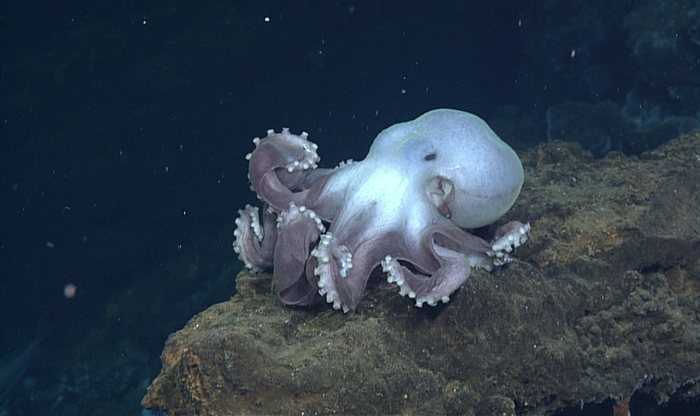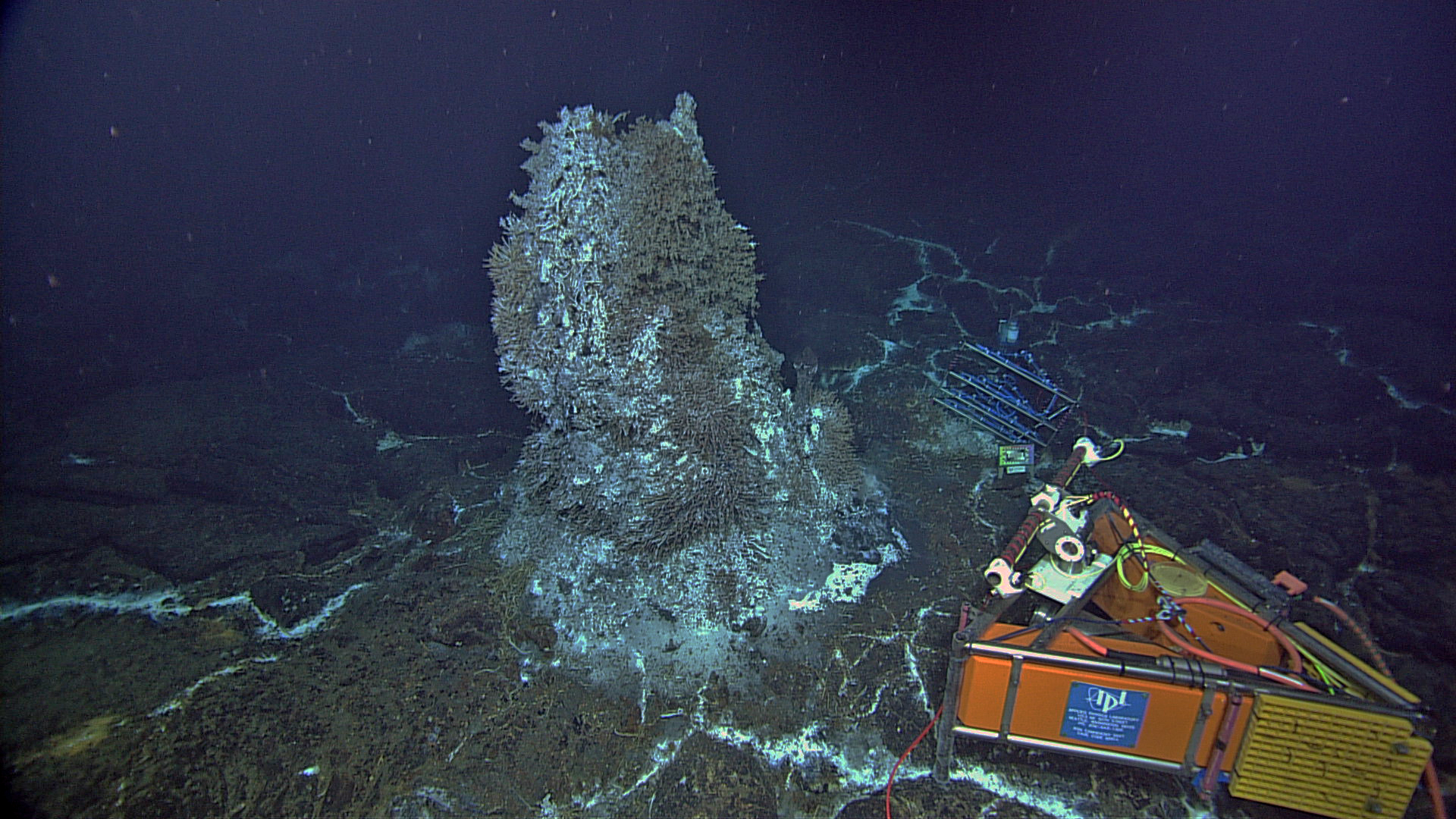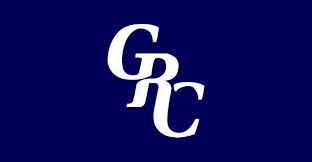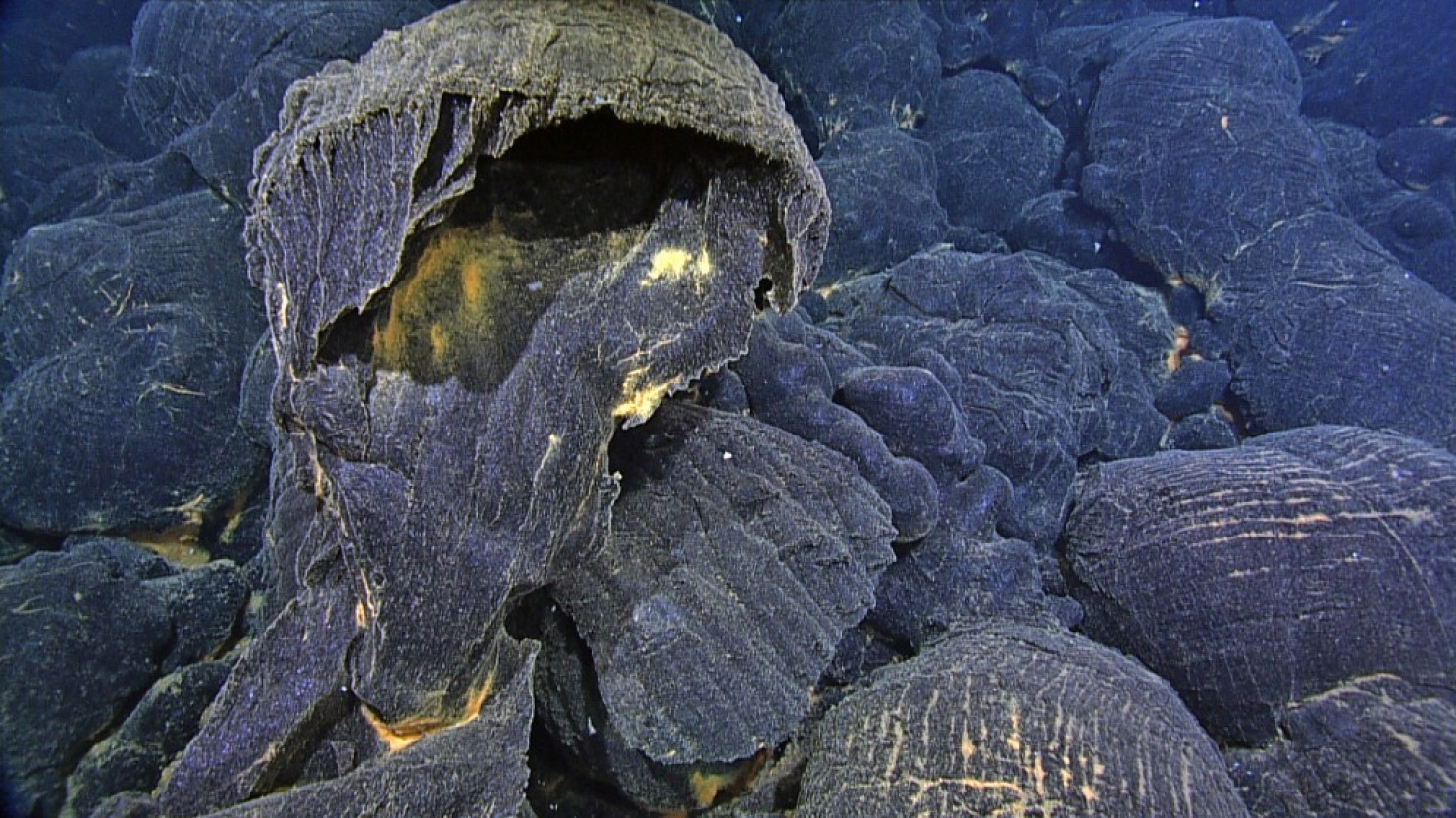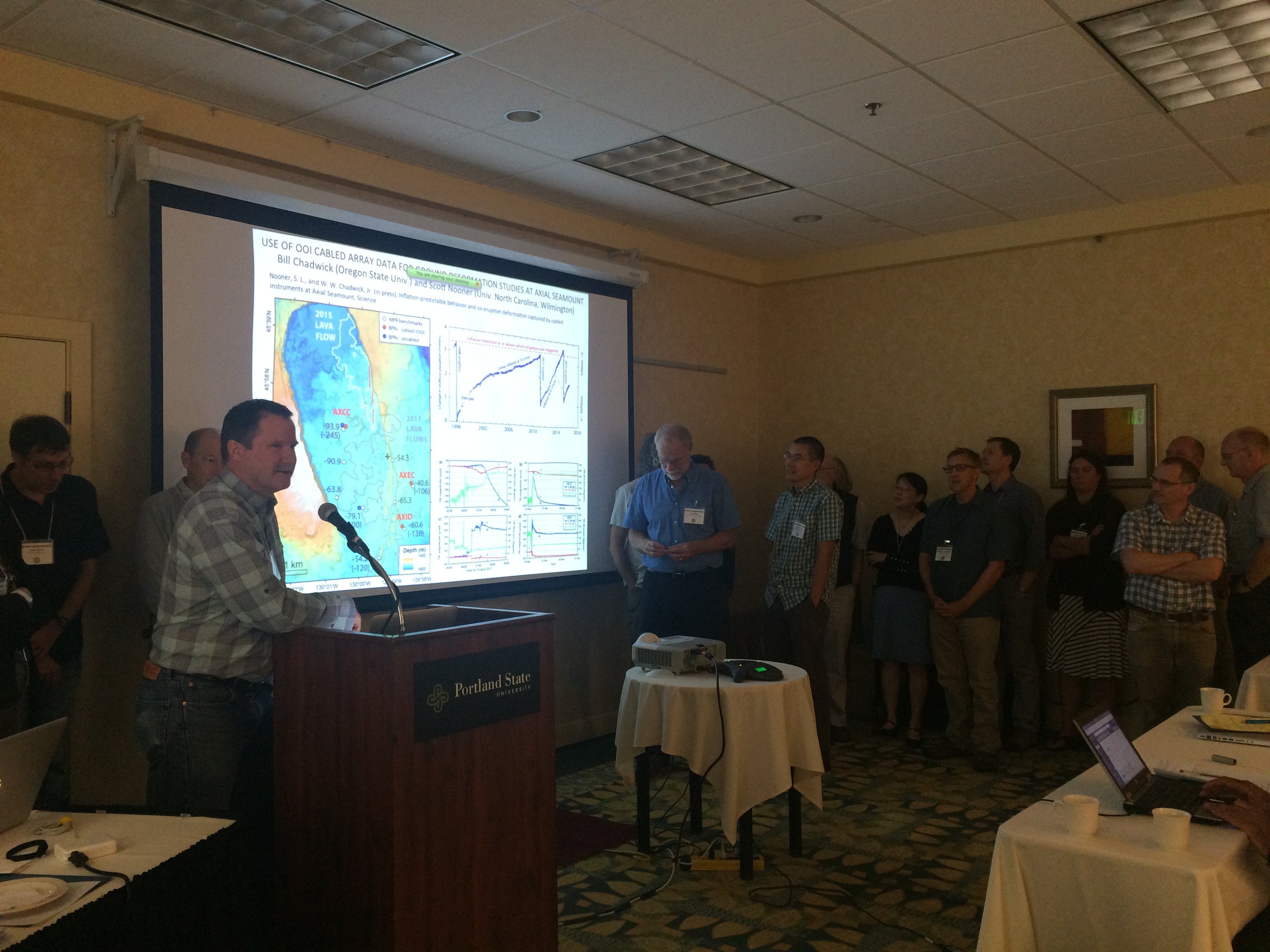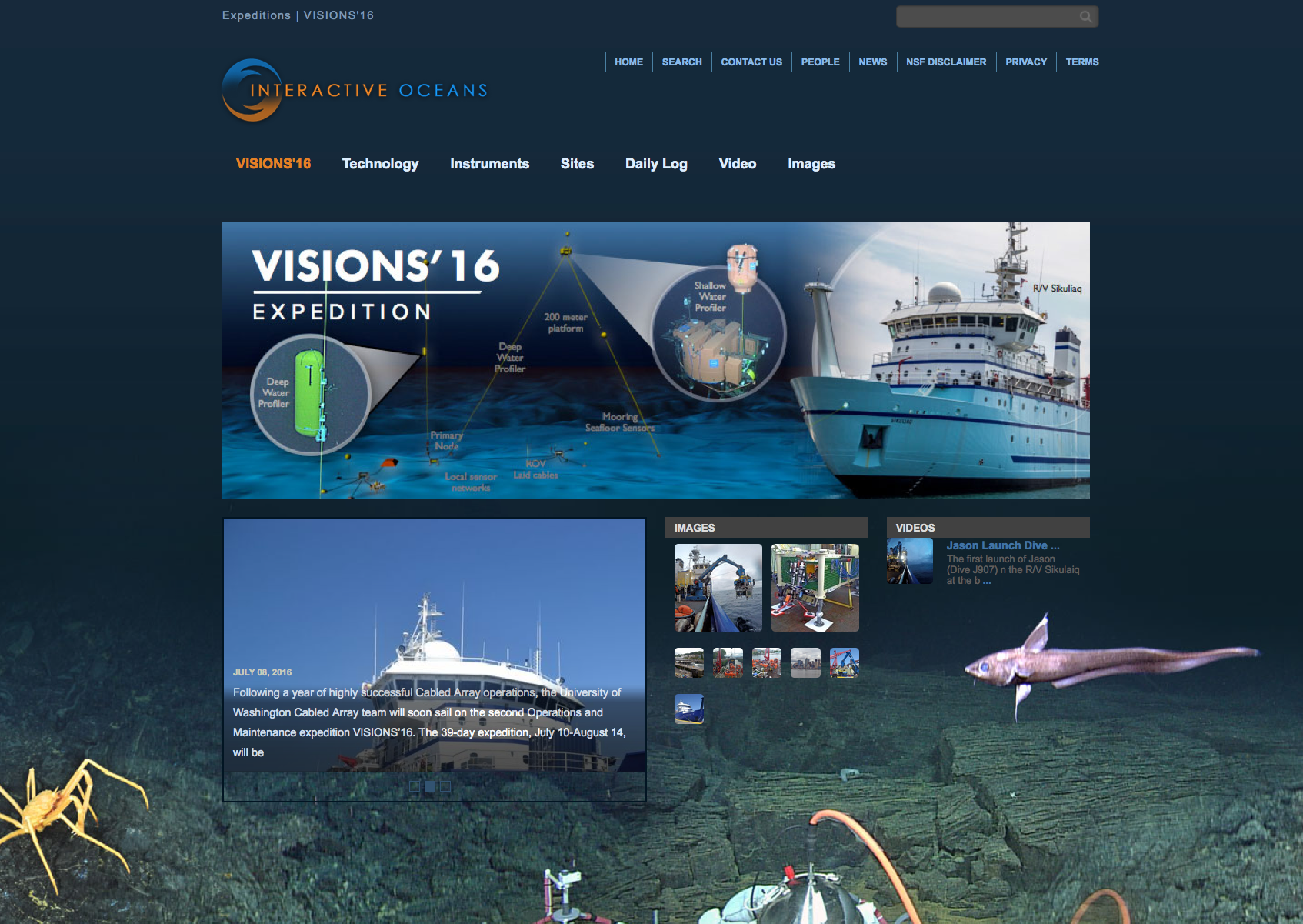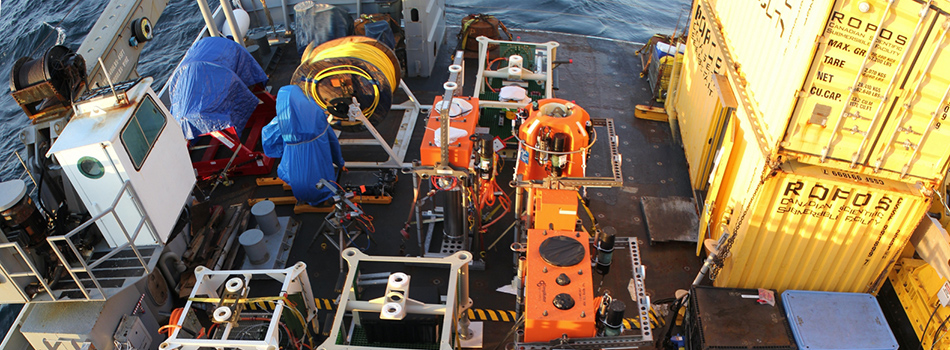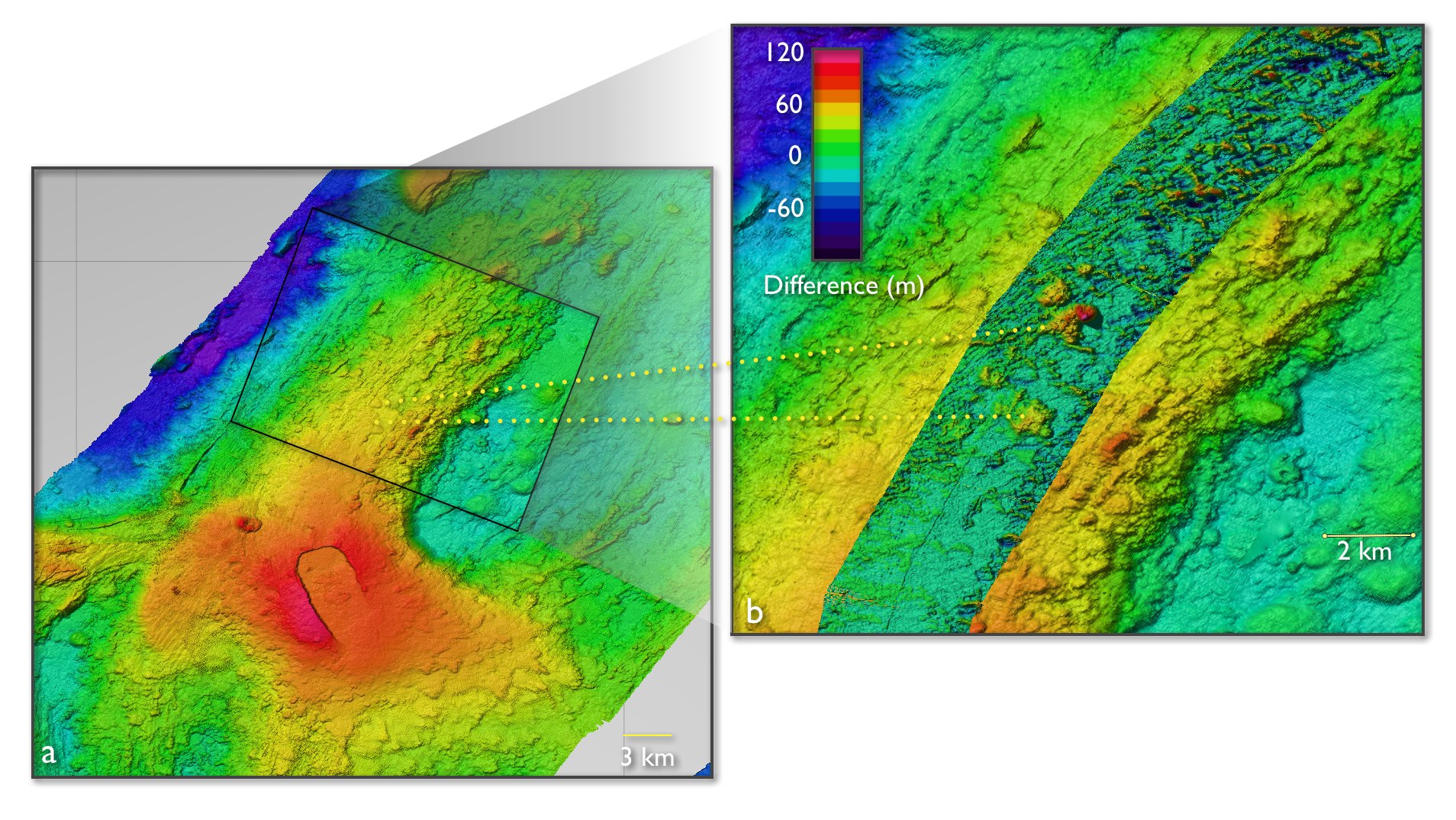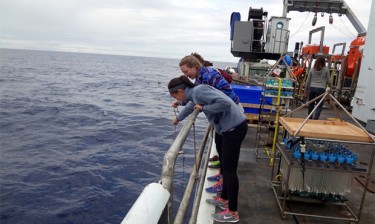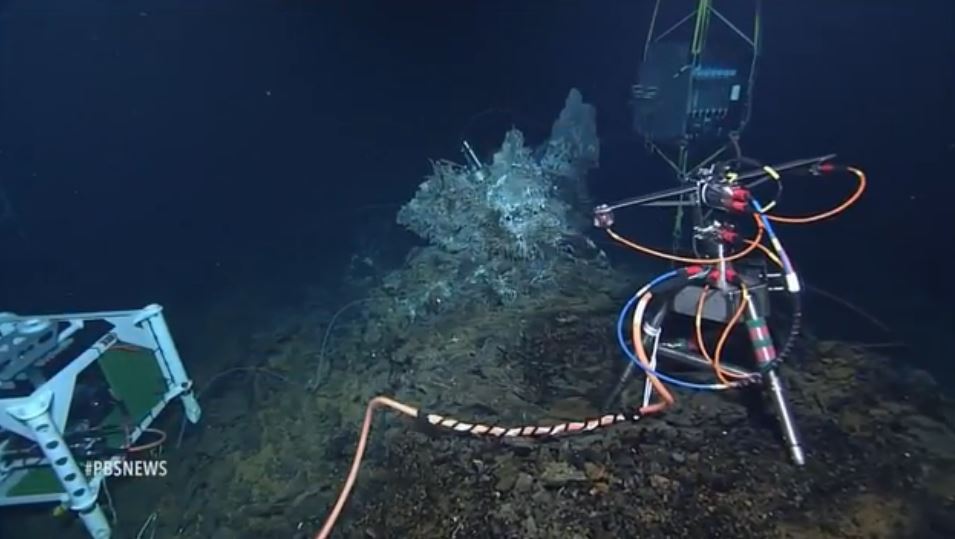Posts Tagged ‘Cabled Array’
Axial Seamount Biology Catalog Live
The Axial Seamount Biology Catalog is a collection of stunning video and still imagery obtained during the Construction and Operation and Maintenance phases of the OOI Cabled Array spanning 2011 to 2016. The catalog currently contains 39 unique faunal entries, 63 videos, and 62 images.
Read MoreAxial Seamount Hydrothermal Vent Time-Lapse Videos
Undergraduate students at Rutgers University have used still frames extracted from the HD Video camera (CAMHD) to compile time-lapse videos of the hydrothermal vent, under the direction of the OOI Data Team. There are 7 biological scenes of interest, captured during the pan/zoom routine of each video. The students are helping produce metadata by time-stamping each scene of interest in every video file on the archive. The students then ran code provided by the OOI Data Team to produce time-lapse videos and watch the vent change over time at each of the scenes of interest. More videos and additional post-processing techniques will be added over time, using open-access tools.
Scene 1
Scene 3
Scene 5
Scene 6
Scene 7
Scene 8
Workshop Report: Southern Hydrate Gordon Conference
This report summarizes discussions from a mini-workshop held after the Gordon Research Conference (GRC) on Natural Gas Hydrates March 4-5, 2016. The workshop was focused on opportunities presented by the Ocean Observatories Initiative (OOI) Cabled Array at Southern Hydrate Ridge.
Further information on the conference can be found on the conference website.
Download the full report here.
Read MoreWashington Post – A massive underwater volcanic eruption is captured in real time
The sea floor split open on April 24, 2015, but scientists had seen it coming for months.
Read MoreUNOLS hosts Workshop Focused on OOI’s North East Pacific Arrays
The University-National Oceanographic Laboratory System (UNOLS) hosted a recent workshop in Portland, OR focused on the current and future science that can be addressed by the extensive OOI infrastructure operational in the Northeast Pacific.
Read MoreVISIONS’16 OOI Cabled Array Maintenance Cruise Begins
On July 10, the R/V Sikuliaq left dock at the University of Washington to begin VISIONS’16, a 39-day mission to replace and maintain elements of the Cabled Array off the coasts of Oregon and Washington. Led by Chief Scientist Deb Kelley, this is the second Operations and Maintenance cruise for the Cabled Array implementing organization, as part of the National Science Foundation’s (NSF) Ocean Observatories Initiative.
During the cruise, scientists from the University of Washington School of Oceanography within the College of the Environment and engineers from the Applied Physics Laboratory will visit all of the Cabled Array sites where they will recover, install, and test over 100 instruments and nine junction boxes. They will also recover and reinstall the Deep Profiler Moorings at the Endurance Offshore and Slope Base sites. The remotely operated vehicle (ROV) Jason will also assist in the recovery and installation of the underwater infrastructure. This is Jason’s first time supporting the Cabled Array, which required special modifications to be made to the ROV over the past year.
The three legs of the cruise will run from July 10 to August 15, 2016.
You can learn more about the cruise on the VISIONS’16 website, which includes daily cruise logs, as well as image and video galleries. You can also follow along on Twitter (@VISIONSops), where up-to-the-minute updates about activities on board are posted.
Read More2015 Cabled Array Cruise, A Success for OOI Infrastructure and Scientific Discovery
The 2015 Cabled Array cruise marked the completion of installation at the Cabled Array, provided a first look at the April 2015 Axial eruption site, and led to the discovery of a new seep site on the continental slope.
On August 7th, the OOI Cabled Array team, along with 21 students and the remotely operated vehicle ROPOS, completed installation of the OOI Cabled Array, as well as its first maintenance cruise. A total of 118 instruments are now streaming data from the Juan de Fuca plate through 540 miles of fiber-optic cable to shore.
The R/V Thompson set sail on July 4th from the University of Washington on a 3-Leg, 35-day cruise with the objective to 1) deploy Deep Profiler Moorings on the continental slope, at the slope base off of Oregon, and at the base of Axial Volcano and 2) recover and reinstall junction boxes, mooring science pods, and instruments at the 6 cabled study sites comprising the Cabled Array. Over the course of the cruise, 13 platforms and 112 instruments were installed and ROPOS completed 55 dives. (more…)
Read MoreAxial Eruption Site Identified – Bathymetric Survey Data Available Online
On April 24th, 2015, the Axial Volcano, situated on the Juan de Fuca plate 300 miles offshore, erupted one-mile deep in the ocean and we saw it.
Read MoreStudents, Researchers at Sea Working on Recently Erupted Deep-Sea Volcano
When an underwater volcano erupted in April off the Oregon coast, researchers knew within minutes that something spectacular was happening more than 300 miles offshore.
Read MorePBS News Hour – The Challenges of Wiring up at Undersea Volcano
The OOI Cabled Array was profiled in a PBS News Hour video July 7th. Check out the video here with interviews from OOI scientists and deep sea footage.
Read More
